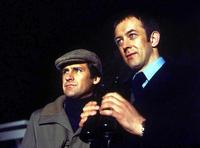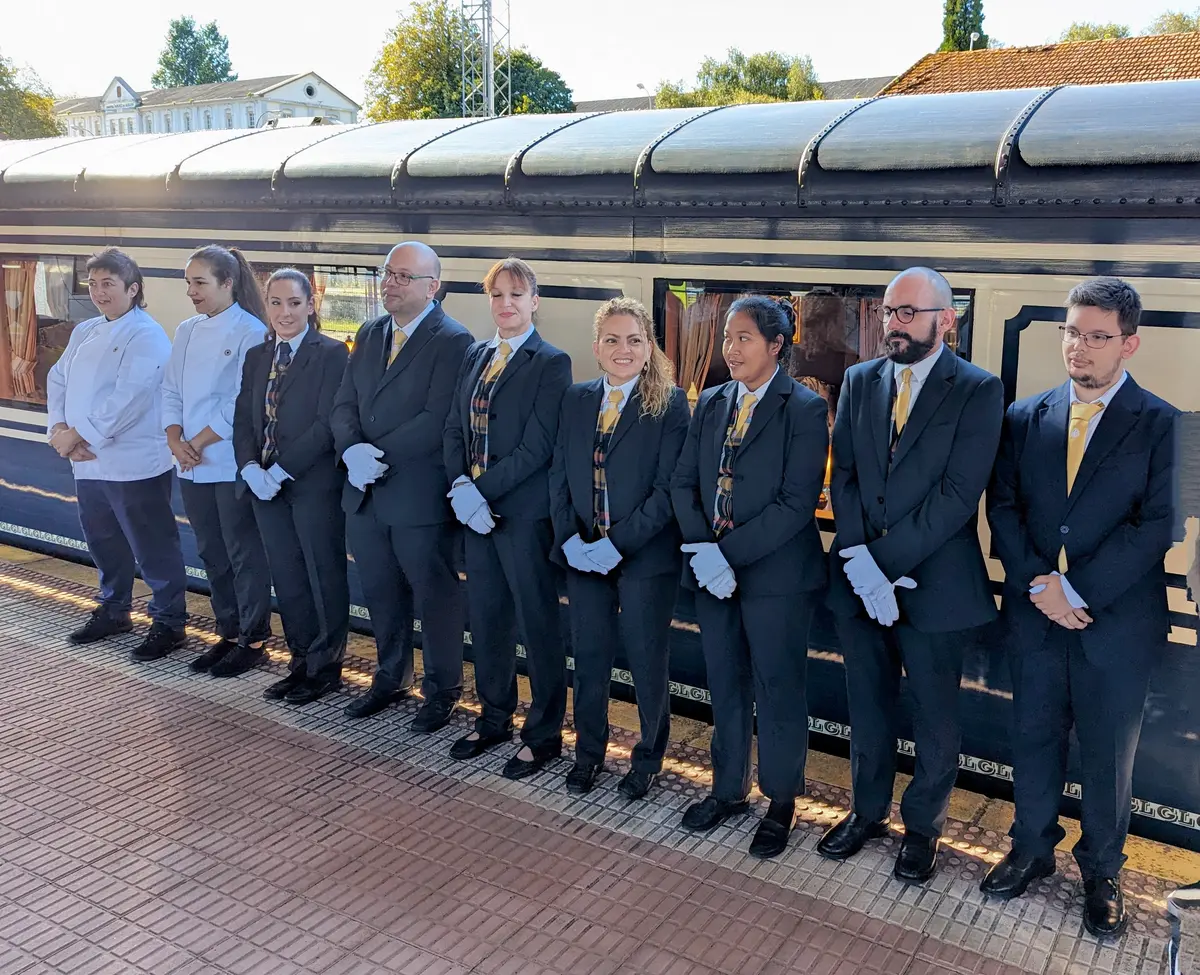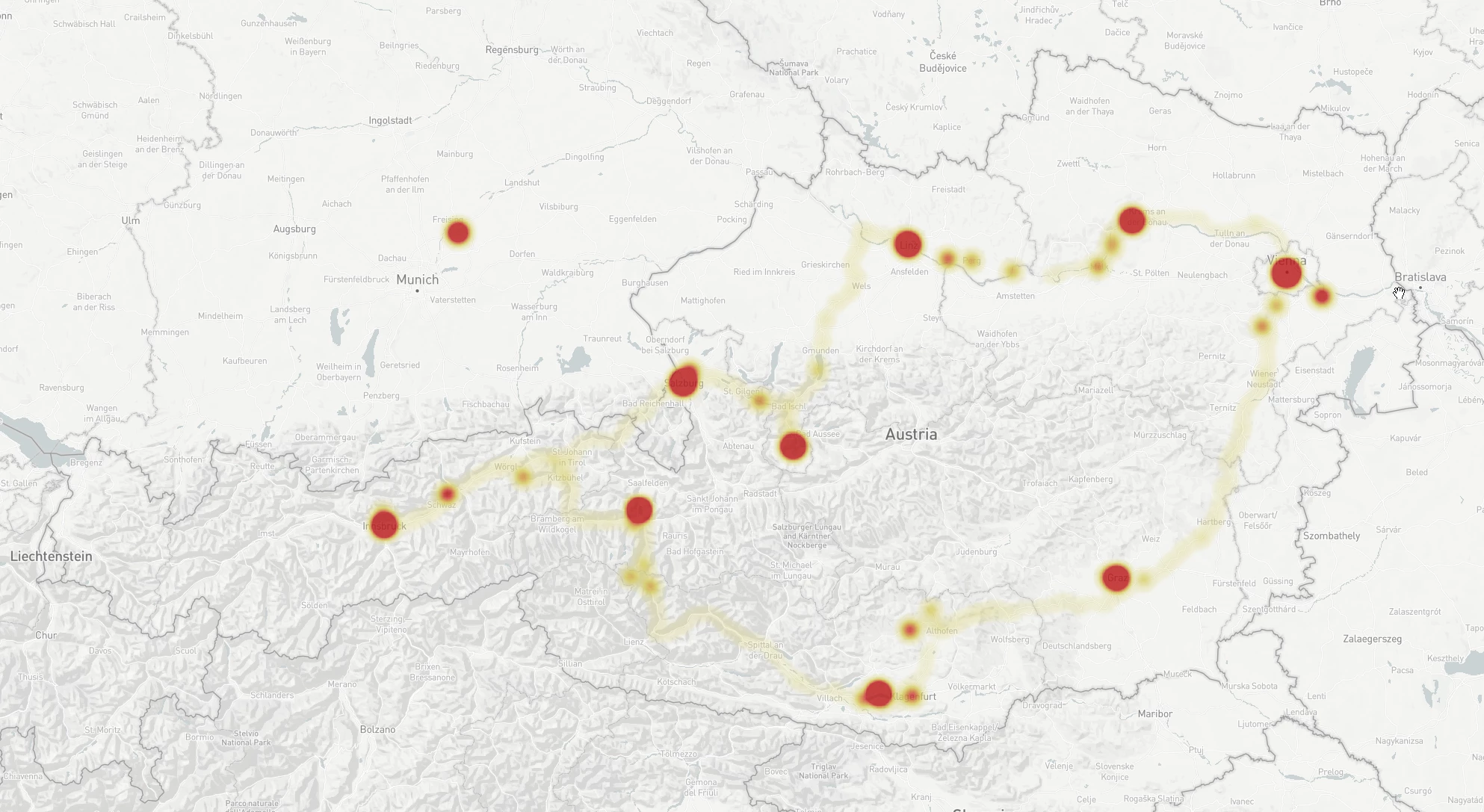
Cheese enchiladas are some of my favorite old school Tex-Mex food. Corn tortillas, orange cheese, smothered in a beefy thick gravy. The gravy is not like a typical Mexican enchilada sauce: no tomatoes or tomatillos. Instead it’s more of a Southern gravy like you’d put on biscuits or serve with turkey, but spiced with chile, cumin, oregano, and garlic powder. The key thing is it’s made with a roux. And a lot of roux, it really is a thick gravy. You never see this sauce in California or New Mexico and I suspect not in Mexico itself except maybe at the border. But it’s everywhere in Texas. it’s a defining element of Tex-Mex cuisine. There’s an early recipe for the Tex-Mex gravy in the 1908 Gebhardt Chili Powder Company cookbook. This cookbook was written for Americans for whom Mexican food was exotic. It was written mostly to sell their chili powder, a spice blend of mild chiles (probably ancho), cumin, oregano, and garlic powder. (I made a PDF of the book from these scans.) Salsa de Chili—Chili Gravy Note it doesn’t mention enchiladas. There’s no enchilada recipe in the copy of the book I have. But this is our Tex-Mex gravy! Although it’s awfully light on the spice. Robb Walsh’s Tex-Mex Cooking has a modern version of the same gravy, see the NYT version. It’s a 4:1 mixture of chicken broth to roux with Tex-Mex spices added. Walsh’s recipe says The lifeblood of old-fashioned Tex-Mex, chili gravy is a cross between Anglo-brown gravy and Mexican chile sauce. It was invented in Anglo-owned Mexican restaurants like The Original. One of the best things on our trip to Cambodia in March was a street food tour in Phnom Penh led by Urban Forage. They provided a great guide and a tuktuk and driver. It was an amazing chance to try all sorts of casual snacks and meals, the kind of stuff that always looks so interesting but too intimidating to try on my own. Places were vetted for food safety for delicate Western stomachs and our guide did a great job teaching us about the food. It was so fun and delicious! There’s some photos here and here. Cambodian food is roughly similar to Thai and Vietnamese food, but is its own thing.  First up was the “famous grandma noodle shop”, a home cooking restaurant with the kind of fish noodle soups I loved in Cambodia. This place was a restaurant with a choice of items but also very casual. We had both a chicken noodle soup and the fish noodle soup, both “curry” flavored but clearly Cambodian, not Thai. The rice noodles are super fresh, made that morning, kind of gelatinous and stuck together. The soup had such deep delicious flavor. And lots of fresh ingredients to liven it up: limes, basil, a bunch of unfamiliar herbs like fishwort. The second place was a sidewalk stand near Wat Botum Park. Rice crepe with turmeric, stuffed with chicken and sprouts, dipped in fish sauce / lime juice. Also a rice flour ball with chives in it, fried, dipped in coconut cream. it reminded me a lot of dosas and idlis. Very yummy and seemed like solid daily food. Our third stop was for a baguette with crispy pork belly inside, some herbs, also a fresh carrot pickle. Similar to banh mi. We enjoyed it, all nice and fresh, but at this point we started to realize we were in for a long haul of lots of food. The fourth place was in the Russian market and served barbeque. Various kinds of pork cuts, we had spare ribs. Very crispy fried and quite fat. Was too full to enjoy it all but it tasted great. Fifth was 54ល្ងាចស្រស់ (on Facebook) a restaurant with general Khmer foods, lots of beer, and a live band. Food was a mix of things, all pretty good. My favorite was a squid salad-like dish. This was where we had the stunt food, insects. One big tarantula was OK but silly: legs were delicious like soft-shelled crab. The spicy crickets were pretty good beer snacks. The place was a bit touristy but honest, a place I could imagine going even without a guide. Absolutely full of food and beer, sixth the guide took us to a roadside stall selling a sweet dish. A rice crepe stuffed with fresh coconut meat and a rice candy, some sweetened condensed milk. Quite tasty in its simple freshness. It was a little like this video labelled num lon ong chek. Our final stop was a return to Western familiarity. The wild cocktail bar, a French-run place with coffee, drinks, and spring rolls. Good cocktails, nice outdoor seating. Street food tours may be my favorite new tourist activity! We also did one in Saigon that was fun but not quite as good as this one in Phnom Penh. But in Saigon we also did a cocktail tour from this company, that was terrific. Edmund White died June 3, after a long and much-loved life as one of America’s great gay writers. His 1982 autofiction novel A Boy’s Own Story is his best known, a frank and honest story of growing up gay in the 1950s. Many gay men (including myself) found themselves in that book and the ensuing trilogy. He published 36 books including memoirs, autofiction, novels, historical treatments, and the 1977 Joy of Gay Sex. He is a foundation stone of gay English writing. He always saw himself as a gay writer for gay readers, the distinction he drew between his generation of queer writers and those who came earlier, like Gore Vidal and James Baldwin. They might write gay characters, but they never seemed to be writing for gay readers. Ed was. … Edmund White had no use for shame, and in both life and work, he refused to sand down the edges of queer existence to make it palatable. Acceptance was never the point. Truth was. I’ve been mourning his passing these past few days. I didn’t know him personally but his writing and presence have been meaningful to me, particularly as I evaluate my middle-aged gay life. Some suggested reading:
This was also posted to Metafilter
I took an amazing trip to SE Asia last month, including Angkor Wat. I had a hard time finding good reading or other resources to learn from before I went, in part because Amazon is awash in AI garbage. Here’s some books and podcasts I found useful about the Khmer empire in general and Angkor in particular: Ancient Angkor by Michael Freeman and Claude Jacques. The closest thing to a coffee-table book to preview what you will see. The practical information is outdated but the pictures and descriptions are good. Empire Podcast #185: The God Kings of Angkor Wat by William Dalrymple and Anita Anand. An entertaining and fully detailed account of the Khmer empire. It’s basically an excerpt from Dalrymple’s new book The Golden Road: How Ancient India Transformed the World. Fall of Civilizations Podcast #5: The Khmer Empire by Paul Cooper. Another history, not quite as magically well told as Dalrymple but full of good information. Angkor and the Khmer Civilization by Michael D. Coe. A highly recommended history of the Khmer region. Honestly I found this very dry and too detailed, but I did learn from it. Lonely Planet Pocket Guide: Siem Reap & the Temples of Angkor. We didn’t use this much but it seemed like a useful practical guide. OTOH it dates to 2018 so things have changed. My other advice for visiting Siem Reap and Angkor is: go. It is amazing. Plan for at least two full days of touristing there. Hire a private guide and driver if you can, it is absolutely worth it. (Email me for a recommendation.) I’ve been doing Dry January this year. One thing I missed was something for apéro hour, a beverage to mark the start of the evening. Something complex and maybe bitter, not like a drink you’d have with lunch. I found some good options. Ghia sodas are my favorite. Ghia is an NA apéritif based on grape juice but with enough bitterness (gentian) and sourness (yuzu) to be interesting. You can buy a bottle and mix it with soda yourself but I like the little cans with extra flavoring. The Ginger and the Sumac & Chili are both great. Another thing I like are low-sugar fancy soda pops. Not diet drinks, they still have a little sugar, but typically 50 calories a can. De La Calle Tepache is my favorite. Fermented pineapple is delicious and they have some fun flavors. Culture Pop is also good. A friend gave me the Zero book, a drinks cookbook from the fancy restaurant Alinea. This book is a little aspirational but the recipes are doable, it’s just a lot of labor. Very fancy high end drink mixing, really beautiful flavor ideas. The only thing I made was their gin substitute (mostly junipers extracted in glycerin) and it was too sweet for me. Need to find the right use for it, a martini definitely ain’t it. An easier homemade drink is this Nonalcoholic Dirty Lemon Tonic. It’s basically a lemonade heavily flavored with salted preserved lemons, then mixed with tonic. I love the complexity and freshness of this drink and enjoy it on its own merits. Finally, non-alcoholic beer has gotten a lot better in the last few years thanks to manufacturing innovations. I’ve been enjoying NA Black Butte Porter, Stella Artois 0.0, Heineken 0.0. They basically all taste just like their alcoholic uncles, no compromise. One thing to note about non-alcoholic substitutes is they are not cheap. They’ve become a big high end business. Expect to pay the same for an NA drink as one with alcohol even though they aren’t taxed nearly as much. 
I just finished an extraordinary late-70s TV show, The Sandbaggers. It’s British spy TV. While the show name-checks James Bond frequently the soul of it is more of a Le Carré thing. Intelligence as a series of dismal political battles between underpaid civil servants at the home office. Occasional forays into the field where everything is squalid or ambiguous and nothing grand is ever achieved. The show hangs on Roy Marsden’s performance as Burnside, the Director of Operations at a British intelligence agency. The titular Sandbaggers are field agents, vaguely like the Bond 00 agents, but there’s never any swashbuckling action or romance. Occasional gritty affairs and some grim minor violence, all done on a low budget and with precious few location shots. If you ever enjoyed Blake's 7 or early Doctor Who the low production values will be familiar. So will the excellent quality of the writing and characters, there’s a lot of complexity and subtlety and more than a few surprises. Mostly the show has aged well. It’s firmly set in late Cold War, there’s no hint of the extraordinary transition that happens in the 80s as the Soviet Union fell apart. Unfortunately the show is unimaginatively sexist with a lot of “men hitting on women in the workplace” nonsense. There’s one good female character in part of the show and Burnside’s secretaries are both good actresses with some sharp writing. But it feels dated even for its time. I appreciated watching something at a slower and more thoughtful pace. I think the show is ripe for a reboot. Keep it set in the Cold War with roughly the same stories. But update the show: write better women and modernize the production. Then branch out and tell some new stories in Asia or South America or Africa. You can watch a licensed copy in the US on britbox. We recently took the Transcantábrico, a week long luxury train trip across Northern Spain. It was great! Like a cruise but on a train. We did something similar in India in 2015 and it’s an interesting way to travel. Some photos here. The Transcantábrico goes across a part of Spain a little off the usual tourist track. From Santiago de Compostela through the mountains south of the coast to Donostia / San Sebastián. Along the way we saw towns I never would have gone to on my own: Gijón, Potes, and Santillana del Mar were particularly memorable. Also some beautiful nature including Cathedral beach in Gallegos and Hermida Gorge in the Picos de Europa. The excursions from the train were well organized with a very nice bus and guides. The hospitality on the train was terrific. Our “cruise director” Cristina was particularly amazing, friendly and knowledgeable. All the staff were great and very accommodating. Maybe 12 people helping 25 guests. Meals on the train were excellent and comfortable. Most days breakfast and dinner were on the train, lunch was out. The restaurants were all high quality but variable and honestly just too much food. The highlight was El Corral del Indianu.  Living on a train has its limitations. The private shower was very nice with lots of hot water but you’re still washing in a telephone booth. The queen size bed was comfortable but in a very tight space, we wished we’d booked two single beds. And getting around the train was difficult (you have to move sideways in the corridor), particularly when the train was moving. After a week I was ready to be back in a normal hotel. OTOH it was beautifully furnished and it was great being unpacked and taken care of so well. I’d definitely do another luxury train. But maybe fewer days. The key thing is the itinerary, the places to go. That was amazing in India, a week long trip from Delhi to Mumbai. Spain was beautiful and I appreciated going slowly through a place off the beaten track with knowledgeable local guidance. Rewarding trip! PS: if you want to see more, Mighty Trains S04E02 is about the Transcantábrico. Social media businesses should not charge* for APIs. If a company like Reddit or Twitter derives most of its value from content that users write for free then it must provide APIs for anyone to download and manipulate that content. While an interactive API that enables third party applications is desirable, a simple static dump is the bare minimum to fulfill the social contract (see StackOverflow or Metafilter for examples.) Unfortunately Twitter and Reddit don’t agree. They are both rent seeking with their APIs. Their main intent is to destroy third party apps that no longer aid the company’s business goals. But they’re also trying to make a few million bucks a year licensing access to data, particularly on the back of AI training. It’s wrong. The key thing here is social media sites don’t produce content. They merely host it. Millions of users create the content expecting it will be widely available. Locking down an API breaks that social contract. Honestly I don’t care as much about full fledged third party clients like Apollo or Tweetbot; I like them but I understand why the companies want to kill them. What I care about more are analytics sites, things that provide interesting alternative views like a Reddit user profile or Emoji tracking. I also think it is the greater good to let AIs train for free. *I don’t mind a site charging a nominal fee for API access. Either to cover the cost of API service itself, or more importantly to encourage API developers to be efficient when making API requests. But that's hundreds to thousands of dollars a year, not millions. The short sighted thing about these API fees is they will harm the company in the long term. If it becomes difficult to use a proper API to get at content folks will simply screen scrape it instead. That’s bad for everyone. I’ve been listening to the same music every night when I go to sleep 10+ years now. Weird endorsement; I’ve listened to it with more attention plenty of times too. But it’s particularly good for going to sleep; calm, interesting, and comfortably familiar. That music is GAS, Werner Voigt’s ambient techno project (Bandcamp, Youtube). The primary collection is Nah und Fern, four albums that were made over 1996–2000. In 2017 he released a new GAS album, Narkopop. Followed in 2018 by Rausch and 2021 Die Lange Marsch (a sort of remix). I like the first four most. Ambient music is pretty hit or miss. For every brilliant work like Music for Airports or Aphex Twin’s early music there’s a zillion gormless electronica and “earth fart” recordings that fail to inspire. Furniture music is supposed to be in the background, sure. But still high enough quality to be appreciated. GAS succeeds. It has just enough of a beat (sometimes) to make time flow without being overwhelming like regular techno or something rhythmically complex like Autechre. The sounds are richly textured with a bit of fuzz and noise to make it organic. And I like the slightly broody or sinister tone. Not scary, but they make me happy I’m snug in my home under the blankets. Ken and I just got back from a 23 day trip exploring most of Austria. We had a lovely time although we did get a little worn out and ready for home after a couple of weeks. Along the way we stayed in Vienna, Graz, the Wörthersee, Zell am See, Innsbruck, Salzburg, Hallstatt, Linz, and Dürnstein. A nice mix of cities and countryside. I tweeted a bunch of postcards, easily viewed here and here.  My favorite places were the town of Graz and the countryside in the south from the Wörthersee through Zell am See to Innsbruck. The drive over the Grossglockner Alpine Road was a particular highlight and the lush green alpine valleys of Styria, Carinthia, and Tyrol were just a delight. Salzburg was also a very good visit. Linz was an industrial disappointment and Hallstatt was tourist hell; skip it unless you are very interested in the archaeological story. We ate very well on this trip; Austrian cuisine is more interesting than the schnitzel-and-boiled-beef that was my stereotypical view. Lots of fresh fall ingredients. The pumpkin cream soup was particularly good. Enhanced with Kürbiskernöl, pumpkin seed oil that's deliciously nutty and green tasting. And of course plenty of fantastic sweets; the French call pastry viennoiserie for a reason. The single best meal we ate was at Pfefferschiff in Salzburg. |
||
